Horse Thrush is an infectious disease of the frog of the horse’s foot, often brought about by poor foot care and unhygienic practices in the stable. Dirt and fecal material can easily be trapped in the crevices on either side of the frog. If this is not cleaned out, it provides a beautiful moisture-rich environment for the bacteria that cause thrush to thrive.
Causes of Thrush in Horses
Horse thrush is a bacterial infection of the hoof and occasionally a fungal infection. The Fusobacterium necrophorum is specifically aggressive, destroying and invading the frog. These bacteria eat into the frog tissue, creating a stinking grey-to-black liquid with a characteristic smell- once smelt, never forgotten. In addition, the frog starts to fall apart.
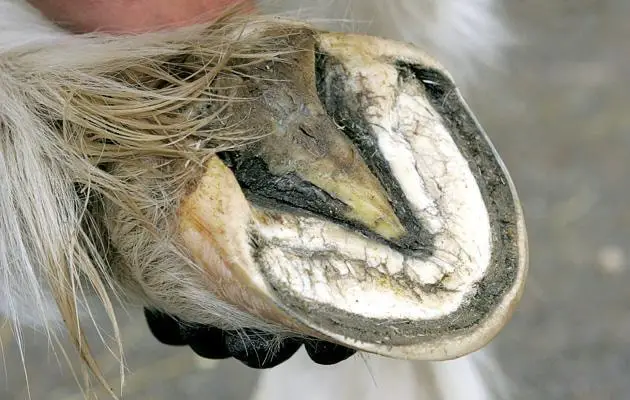
Horse Thrush Symptoms
There are many symptoms of the Horse Thrush. These include:
- Discomfort to your horse.
- Lameness unless it is left to penetrate the underlying soft, sensitive tissue of the foot.
- Smelly dark discharge.
- Softening of the frog.
- Your horse may be tender.
- Strong pungent-smelling feet.
- Pasty discharge from the hoof of your horse.
- The rotting odor from the underside of the feet.
- Black or dark ooze showing on the bottom of your horse’s hoof.
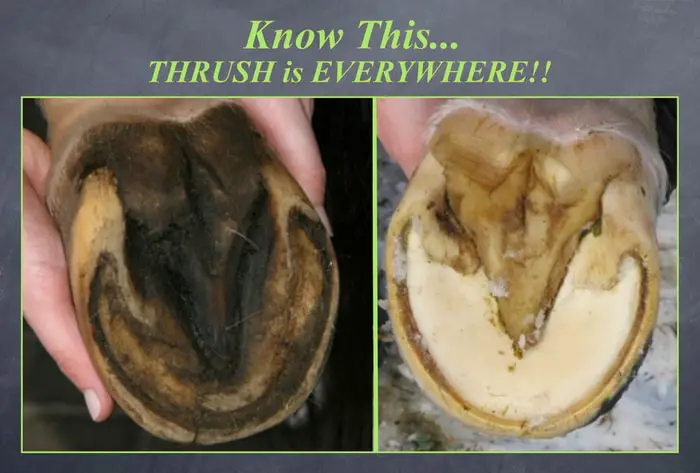
Horse Thrush Treatment
Your horse treatment involves the removal of the affected parts of the frog using a hoof knife. Your vet or farrier must do this. Then antibiotic spray, iodine solution, or a 10% formaldehyde solution can be applied to the infected areas. The healing time is generally short, that is, 10-14 days because the infection is usually only shallow and does not affect the deeper layers of the foot.
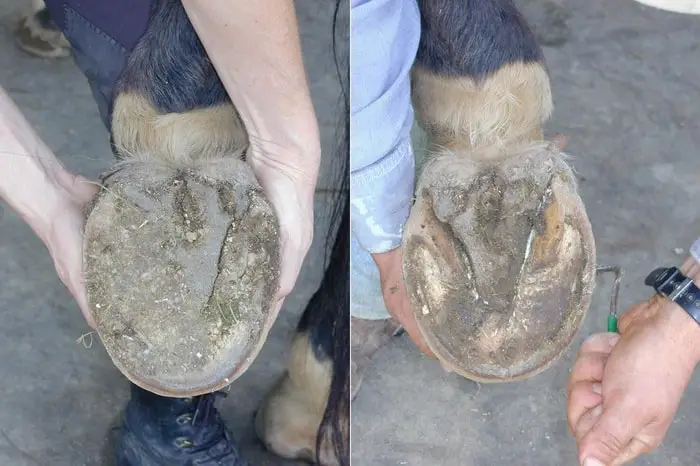
If the deep tissues of the foot have been affected, local anesthesia or sedation of the horse may be needed to allow your vet to operate and remove the infection. Afterward, the foot may need to be bandaged with iodine-soaked swabs for a few days until healthy new frog tissue re-forms.
Daily foot soaking in antifungal agents may be recommended by your vet, and most importantly, your horse should be kept in the driest conditions as much as possible. If large amounts of hoof wall have been removed, acrylic can be used to fill in the defect once the infection has been eliminated.
However, this process can take weeks, running to several months, until the infection has been entirely resolved.
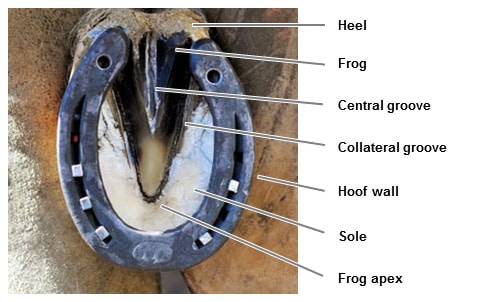
How to Prevent Thrush in Horses
Prevention is better than cure. Good practices include care over Hygenic, daily picking out of the feet, regular and accurate hoof trimming, and turnout on dry pasture.
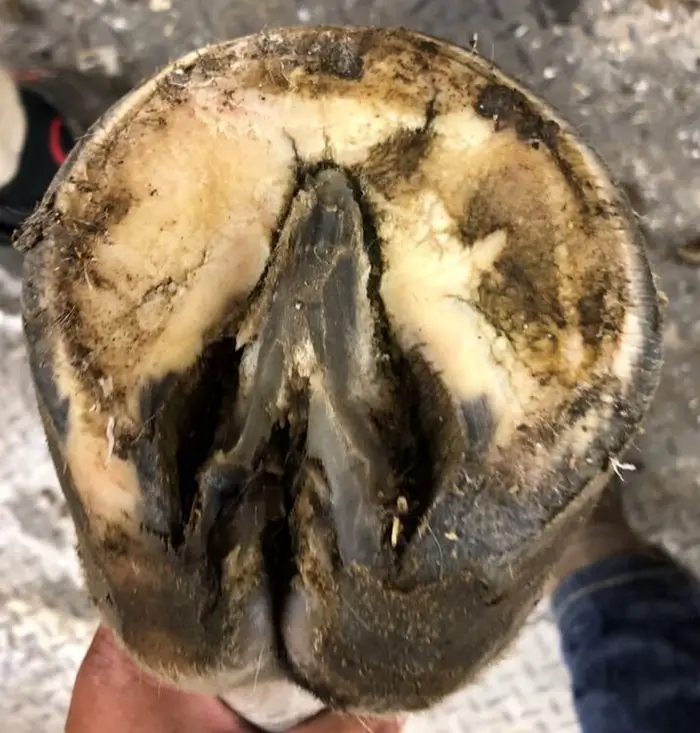
Concluding Remarks on Horse Thrush
Horse thrush is a bacterial and fungal infection of the frog, and it is often attributed to dirty, muddy conditions. Regular soaking in antifungal agents can help to beat thrush. Crack that has been cut back and repaired to a crash, with the two sides screwed together. In my article, I have to discuss all the information about Horse Thrush that is very helpful to a horse lover.